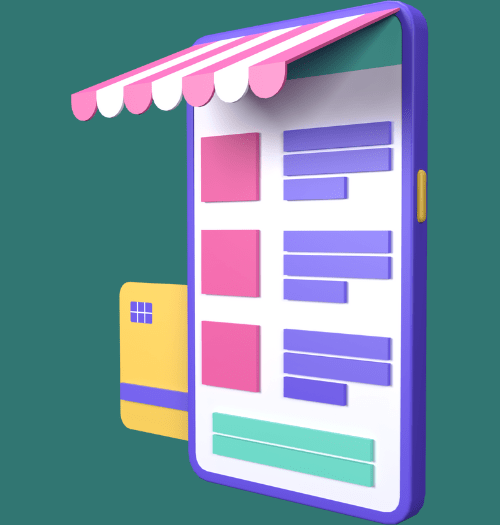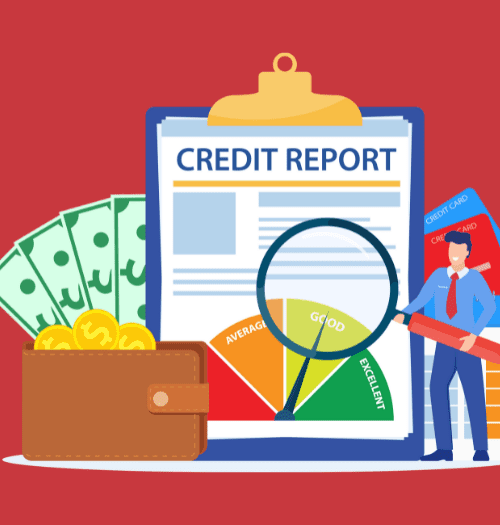The Lender’s Roadmap to
Digital Onboarding



This blog is a conversation between 2 important people from the lending technology landscape. Mr. Hafeez Mirza and Mr. Mani Parthasarathy talk about,
- The digital onboarding process and its three main aspects.
- Challenges faced in digital onboarding.
- The use of APIs.
- Role of customer in the digital lending process.
- Regulatory measures.
The conversation between the tech enthusiasts from the lending world requires the mention of two important things. The two factors help the audience to understand the relevance and significance of this conversation.
First, all queries posed during the conversation are based on a survey conducted by CloudBankin among several lending organizations that are facing issues with the digital onboarding process.
Second, this dialogue comes at a time, when the pandemic, though slowing down in pace, has left back a huge economic void in the professional and personal lives of people. With social distancing on one side and the growing need for funds on the other side, it is not less shocking to know that over 500, 000 people are searching for loan providers online.
Let us get started…

Mani Parthasarathy
The need to “go digital” has increased tremendously and digital onboarding has become the buzzword in the lending landscape. Hafeez, what is digital onboarding and how is its different from the traditional method of onboarding a borrower?

Hafeez Mirza
Digital onboarding is the use of an online platform to gain new clients (borrowers), in laymen terms.
The traditional onboarding process involves too much paperwork, is tedious, time consuming, and prone to errors. Even big banks make the government mandated KYC process a tiresome, boring, and repetitive process. This unyielding nature of the traditional loan process has paved way for digital onboarding of borrowers.
In digital onboarding, the process is completed by uploading the soft copies of relevant documents and validating them using technologies like OCR (Optical Character Recognition). The KYC process takes only few minutes to be completed when compared to the many days involved in the traditional process.

Mani Parthasarathy
Hafeez, what are the biggest advantages of digital onboarding?
Hafeez Mirza
With digital boarding the process is completed in just few minutes. Also, there is very less effort and cost involved. Manpower can be reduced, and errors can be minimized.
Mani Parthasarathy
With respect to the collection of information, what is the difference between the digital and traditional approach?
Hafeez Mirza
In the traditional process, when the customer approaches the bank or the NBFC, they are informed about the documents required for the process and are requested to keep them all ready.
The customer goes back to get original documents along with the photocopies. Then comes the problem of missing documents and the need to submit documents multiple times when applying to more than one bank.
The traditional approach of collecting documents and gathering the required information can take about 5 -6 days on an average.
Contrary to this, in the digital approach, banks are linked to a common database of information about customer and the verification process is real time. When used optimally, digital onboarding allows loan disbursements within only 3-4 hours.
Mani Parthasarathy
What are the top challenges that a borrower would face with digital onboarding process?

Hafeez Mirza
I believe the documentation part of the process is the biggest challenge for borrowers. This is especially true in the case of rural customers. Rural parts are the least tapped market and yet penetrating the market comes with a few challenges.
For instance, rural customers often have no bank account and thus no bank transactions. They do not have income tax related documents too. In most cases, the only document available would be the voter ID. Determining the financial information of such borrowers can be a problem.
However, digital onboarding is still the better option for such borrowers as visiting these customers physically, may not be feasible.

Mani Parthasarathy
Your answer triggers another question. How can the location of a customer from a rural area be captured during the digital onboarding process?

Hafeez Mirza
Capturing the exact location of rural customers is a challenge as they do not have elaborate addresses. However, the location is captured through techniques like geotagging and by using the information they provide while availing a LPG connection. Accuracy of the location captured may not be 100% perfect.

Mani Parthasarathy
Hafeez, could you please explain the various stages for digital onboarding from the lender’s perspective?

Hafeez Mirza
Sure, of course! My answer will also address the question from our audience about the data points involved in the process.
There are three major aspects involved in the digital onboarding process, they are
- POI – Proof of Identity
- POA – Proof of Address
- Proof of Income.
In other words, these are the key data points involved in the digital onboarding process. All details are collected and verified digitally.
As we move on to explore the various stages of digital onboarding, one must remember that while I furnish a general outline of the process, there may be some changes based on how an organization is willing to onboard a customer.
The first step attempts to answer the question WHO IS THE CUSTOMER?
- Basic details such as name, gender, age, family details are collected.
The second step attempts to answer the question WHAT IS THE CUSTOMER (what is the liability of the customer)?
- The customer is expected to submit the required documents in this stage. The documents needed to support their basic details.
- Customers are expected to upload soft copies of their PAN card, voter ID, bank statements and so on. The documents to be submitted is based on the loan applied and the lender.
The third step is the verification of the documents.
- The documents submitted in the previous stages are verified digitally and the credit underwriting process is completed during this stage.

Mani Parthasarathy
Ok Hafeez. But does the digital onboarding process stop here? What happens when the customer is indeed eligible for the loan?

Hafeez Mirza
The digital onboarding journey continues beyond the underwriting process too. The complete digital process has three main stages.
Stage 1: Customer onboarding and validation of documents.
Documents are collected digitally and are validated through digital means. The underwriting process is completed, and the loan is approved for the right customers.
Stage 2: Signing of agreements and E -mandate.
Using the e-mandate service, servicing the loan through payment of instalments can be done. CloudBankin and ZOOP as a team can help in this stage by setting up the e-signing as well as the e-mandate process for the lender, thus ensuring the payments are automatically received by the lender.
Stage 3: Closure of the loan agreement.
When the final settlement has been completed by the borrower, the loan agreement is terminated.

Mani Parthasarathy
The process seems straightforward. With this information in the background, I would like to introduce a product called CloudBankin on behalf of CloudBankin.
Can you explain how an API actually works? Let us take an example, say, driving licence, how can the API be used in this case?
Moving on, Hafeez, can you please explain about this much-hyped term called API, in laymen terms?

Hafeez Mirza
API – Application Program Interface is the technical term used to refer to that which needs very less integration and allows people to copy and paste the code to get started with. To make it easier for the non-technical people, we can call the API, a product that defines very single process from input to output.
Zoop.One has about 30 – 40 APIs live, currently. In the lending landscape, we have APIs for customer identification and verification such as for PAN card verification, Aadhar card authentication, Voter ID, Passport, and Driver’s License
And for the financial data, we have APIs for bank account verification, bank statement analysis, IFSC check and we have recently launched two new APIs for ITR extraction and Form 26a extraction. Using these two APIs, lenders can extract ITR information and salary information for the previous year as well as in real time with minimal details about any individual.
In addition to these APIs, we provide APIs for OCR, face match and liveness, GST verification for merchant onboarding and asset verification.

Mani Parthasarathy
Can you explain how an API actually works? Let us take an example, say, driving licence, how can the API be used in this case?

Hafeez Mirza
Sure. So, when the DL number is entered by the borrower, this information is communicated to the API server. When there is an API call, there is a real-time communication with the government database. The information required by the lender (customer photo, name, DOB, father’s name, present and permanent address, types of vehicles the customer is allowed to drive, data of issue of license) is obtained from the government database and communicated to the lender without being processed, changed or stored anywhere.
Mani Parthasarathy
Sounds good. However, what happens when there is a fraudulent case? For example, what happens when I enter a random DL number?

Hafeez Mirza
If the number entered is a valid DL number, then the API pulls information that is relevant to that particular number. However, since the photo of the customer is obtained, the information can be cross checked using the face match API. If the lender believes that this proof can also be tampered, then there is the face liveliness API. This API helps identify a fraudster by asking him/her to perform actions like tilting the head, waving and so on.
Mani Parthasarathy
Great! Moving to questions from the audience, one of them would like to know if customer assistance is needed for fetching Form 26 information?

Hafeez Mirza
Yes, the customer assistance is required for the process. This is because, during the process, the IT department sends 2 OTPs – one to the registered mobile number and another to register email ID.
Both OTPs must be provided as they are both different and therefore customer information is mandatory in this process.
However, the process is simple and has only three steps:
Step 1: Consent provided by the customer (we are completely consent-driven platform).
Step 2: Reading into the OTP.
Step 3: Data fetch.

Mani Parthasarathy
What kind of RBI regulations are involved with the digital onboarding process?

Hafeez Mirza
The RBI requires all banks and NBFCs to perform the POI and POA verification before sanctioning the loan. Apart from this requirement, regulations and rules are primarily implemented by the lender based on their needs and specific use cases.
Mani Parthasarathy
Can images of the Aadhar card be taken and encrypted in the digital process?

Hafeez Mirza
Yes, the image can be taken and the rules of the UIDAI is that the user must be always involved during the Aadhar verification and the Aadhar number must always be masked. They do not stop the lender from storing any information.

Mani Parthasarathy
What is the minimum set of data point required for digital KYC verification?

Hafeez Mirza
As mentioned earlier, the RBI requires the lender to perform POI and POA verification.
The best part about digital onboarding is that it requires very minimal information. For instance, for PAN authentication, the lender only needs the PAN number. In other words, the unique number associated with the POI or POA is alone sufficient.
Our APIs focus on the new sector of the customer platform that can be tapped for data and how the required data can be collected through obtaining minimal information.

Mani Parthasarathy
What happens in the case of mismatch in the name of the consumer? How can name mismatches be resolved?

Hafeez Mirza
Our APIs, along with collecting information about a PAN card or a DL, tag the proof with a status too. Thus, the real time status of the proof certainly says something about the name mismatch.
Also, in some cases, the complete name is not entered into the document thus causing more confusion. For instance, Hafeez Mirza is sometimes entered as M Hafeez or Hafeez M. During such instances, it is recommended to use the name match API. This API renders an accuracy percentage for name match. Generally, a name match percentage of 80% or above can be considered good to go ahead with the verification process.

Mani Parthasarathy
Well! However, your answer triggers another question. Matching the name from multiple documents can itself be tedious. Can the name match API resolve this issue?

Hafeez Mirza
Yes, certainly. This is done by matching the customer input with any of the documents and a match percentage can be generated.

Mani Parthasarathy
What happens when I enter my PAN number into the stipulated space with the Aadhar number of Hafeez? I believe this is a case of fraudulence though both documents are valid.

Hafeez Mirza
As I already mentioned, in the initial stages of digital onboarding, the lender collects the basic information and later the supporting documents from the customer.
Lenders must set up a risk algorithm at their end to match the information obtained from the data fetch to the information obtained from the basic and supporting documents. If the information does not match, then the algorithm will yield a zero and the application can be rejected.

Mani Parthasarathy
Are all API hits (API history) recorded?

Hafeez Mirza
No, not from our (API provider) end for security reasons.

Mani Parthasarathy
How secure is the digital onboarding process?

Hafeez Mirza
As the API provider, I can assure 100% security through two important aspects.
First, we provide cloud services using Amazon servers and try to follow the highest level of encryption to ensure optimal safety.
Second, we do not store any data. We are only a channel of communication and do not process or alter data in any way. Thus far, there has been no case of data leakage through our APIs and this is one of the reasons why we have over 90% customer retention.

Hafeez Mirza
Mani, can you please explain about the benefits that lenders can reap from the partnership between CloudBankin and Zoop.One?

Mani Parthasarathy
Sure. The major benefit we provide for NBFCs and microfinances in reduced cost. Cost per lead for these organizations is generally around INR 200. We will be able to reduce the cost by a significant amount.
The next important benefit is the ability to go paperless. And then the amount of time taken to handle a loan is reduced significantly.
Finally, the history of every customer is recorded. For instance, if a customer is onboarded using a mobile number, this number is matched with his PAN number. If another customer with a different mobile number uses this PAN number, then the act of fraudulence can be captured easily.

Hafeez Mirza
I would like to add another point. NBFCs can easily integrate the system into their business. They do not have to worry about seamlessly integrating the system and scale further. Instead, they can continue to focus on capturing more customers.

Mani Parthasarathy
Can you please explain what are the validations that can be done through video KYC?

Hafeez Mirza
Banks and bigger lending institutions can implement the Video KYC setup as they have the resources needed for it. However, for smaller lenders, this may not be financially feasible. In this case, digital onboarding is a better option.

Mani Parthasarathy
Can the KYC process be completed without video KYC?

Hafeez Mirza
Yes, the KYC can be completed with the help of APIs alone.

Mani Parthasarathy
Can APIs be connected to judicial cases?

Hafeez Mirza
No, not now. But the possibility does exist for the future.

Mani Parthasarathy
What is the future of digital onboarding?

Hafeez Mirza
Data privacy will certainly be a major area of focus for the consumer as well as the client. We are also working on this area, to ensure optimal safety of data.
To summarize, ZOOP.ONE is a tech company that is basically a transporter of data from one source to another. We never store, process and format the data passing through our product. Our main aim is to ensure that time is never lost while relaying the data from one source to another. And this makes us stand out of the competition.
Speaker Profiles:
Hafeez Mirza: With vast experience in the fintech, ed-tech and health-tech industries, Hafeez is adept with handling technology to deliver the right amount of automation for any business process. He is a part of the ZOOP.ONE business team and is responsible for handling end-to-end customer onboarding journey for the digital identity platforms.
Mani Parthasarathy: Co-founder of CloudBankin and a thought leader in his own right, Mani is a seasoned technology expert from the fintech world. His company has been serving clients across the globe and their signature product CloudBankin has changed the way several NBFCs and microfinance corporations have been doing business thus far
Related Post

Introduction to Loan Origination System
What is Loan Origination System? Loan origination is the term

Decoding the Key Parameters in Indian Credit Bureau Reports
Introduction In today's fast-paced financial world, credit plays a vital

Deciphering The Key Variables in a Bank Statement Analysis
Introduction Within the dynamic world of loans, there's an important
- Email: salesteam@cloudbankin.com
- Sales Enquiries: +91 9080996606
- HR Enquiries: +91 9080996576